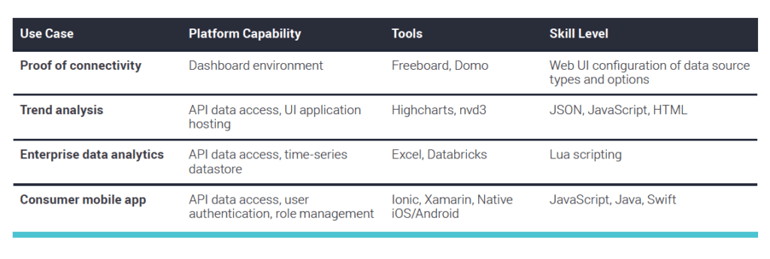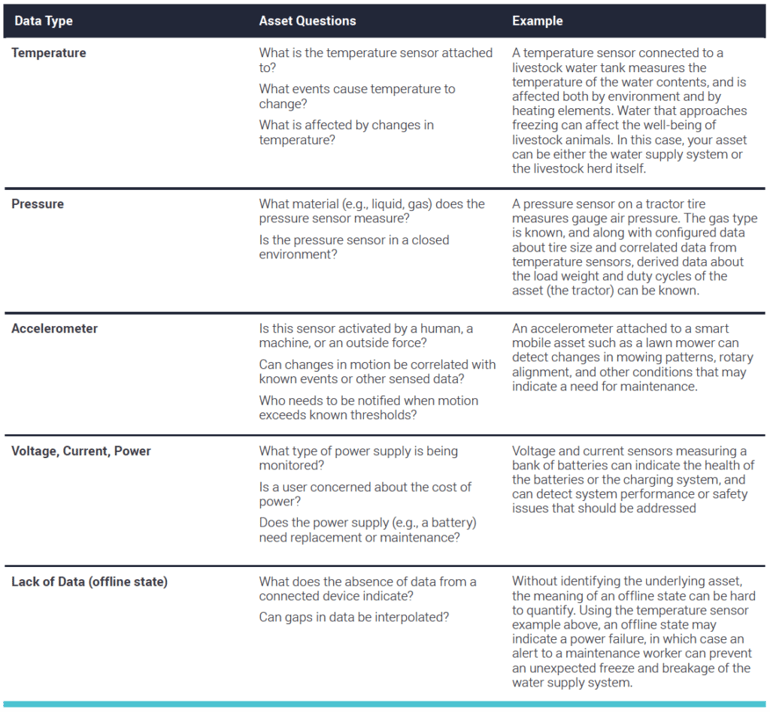4 Best Practices for Modeling a Digital Twin
by Exosite, on May 30, 2017
You know what a digital twin is if you’ve seen any of the news articles focusing on this emerging trend in IoT, but how do you develop a successful virtual sibling for your devices? There are four main practices to keep in mind when creating them:
Model the Asset, Not the Sensors
As discussed in our last blog, the digital twin provides optimal value when it can describe the asset, not the hardware. Remember, hardware and sensors are no more than instruments and gauges that facilitate observation. Leading IoT platforms enable asset modeling with a collection of complementary capabilities. The table below provides questions that can help decouple an asset from its connected hardware.
First, streamlined product definition and management features enable reflection of the connected device’s sensors and digital data, minimizing the need for custom code and datastores to collect and organize data. Second, custom data and event routing capabilities enable the type of flexibility needed to utilize this data in a model that is meaningful to users and their monitored assets. Third, integration with external data sources can be used to augment and enrich the digital twin with more information than exists solely on the asset itself.
Separate Condition from Control
The digital twin reflects the current state of an asset; however, many IoT use cases also require command and control interaction with a connected product. Command and control requests should be separated from an asset model’s state, and is often done with separate values for “observed” and “target” values for a data resource.
Leading IoT platforms incorporate this separation inherently, allowing a digital twin to define which data resources can accept commands and maintaining the correct state of the asset as commands are received, executed, and confirmed.
When presenting a digital twin asset to users, handling the potential difference in the physical and virtual state is important. Showing two different elements during a command sequence or control session—where one contains what the user wants and the other contains what the device currently has—keeps users informed and empowered to react appropriately.
Leverage Data to Provide Meaningful Views
IoT brings challenges in representing something that may not be as simple as one physical connected thing to one digitized thing, meaning that the data is important as grouped topics to different people.
Using an example of a factory and its sensors, most users do not care about the single sensor, although some might. During installation or a situation where signal issues occur or a battery fails, a person may want to know about that specific electronic device. However, a different set of users will only care about the sum data of the complete machine being monitored. Another set of users may only need to see data about the factory as a whole, not individual machines or sensors. It is important to be able to illustrate the concept of a digital twin for different levels of groupings of these physical electronics.
Tactics for enabling that view of an asset model can range from simple UI layout and graphics, to more complex approaches such as derivative data and forecasting. To fulfill this requirement, consider the balance between development complexity and creative freedom.
Dashboard tools are an efficient way to visualize data, but can be constraining when correlating or deriving data from multiple sensors. Visualization libraries can accelerate custom charts and graphics, but require intermediate development skills and the right application hosting environment.
Leading IoT platforms offer these options and more within their capabilities, allowing a solution to mature and target specific roles and use cases. The table below provides an overview of the platform capabilities, tools, and skill levels that may be needed to develop meaningful views for the example use cases below.

Oversample First, Optimize Second
As an IoT product develops from concept to completion, a digital twin should also evolve. At first, take a liberal approach to measuring asset and environmental health. After data (and as a result, meaningful insights) is collected and identified, optimize data streams, bandwidth, and sampling rates to remove unnecessary cost and complexity.
Use an IoT platform that offers the ability to collect and normalize disparate data sets, integrate enterprise web services, and exposes event listeners to capture, store, process, and display the right data at the right time, such as Murano.
Get your copy of the Augmented Digital Twin white paper below, or try our enterprise IoT platform firsthand.





